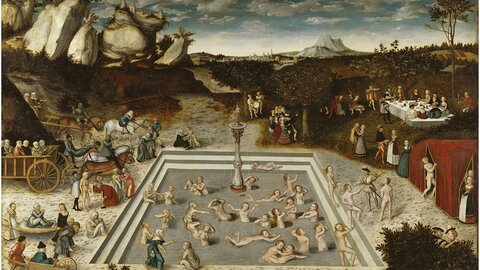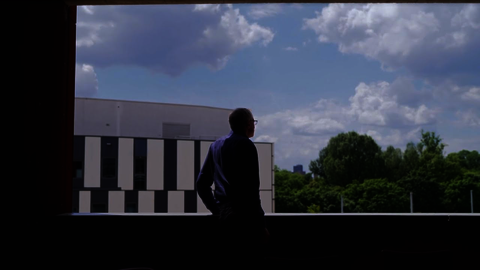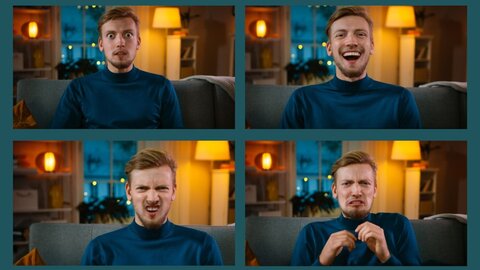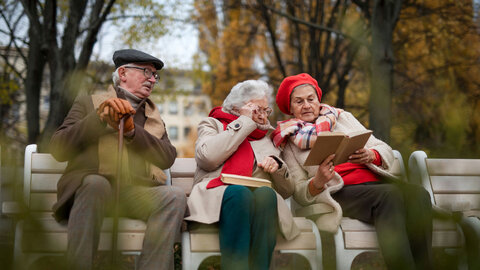Do the Viennese orchestras really have a signature sound? The research project „Signature Sound Vienna“ (2021-2024) has developed modern analysis tools for the collected recordings of the New Year's concerts.
Zeroing in on the treasure trove of waltzes
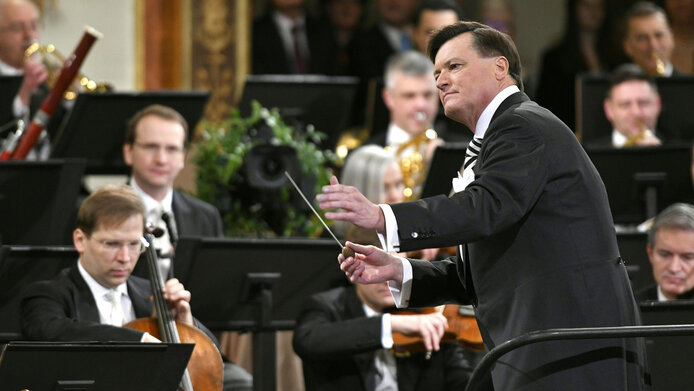
When the Vienna Philharmonic Orchestra starts playing the Danube Waltz (An der schönen blauen Donau) by Johann Strauss Jr. at their annual New Year's Concert, many listeners experience a frisson. Here is a time-honored ritual of the concert: after excursions into less frequently played pieces, the orchestra always returns to great perennial favorites such as : the Danube Waltz, the Radetzky March (Johann Strauss Sr. ), the Kaiserwalzer (Strauss Jr.) and other standard items. This faithful return also imbues the audience with the signature Viennese style. For many, that style is embodied by the slowly crescendoing start of the Danube Waltz, whose characteristic suspensions and striking changes of tempo make this vivacious waltz so charming.
It was in 1941 that the Vienna Philharmonic first performed a concert on New Year's Day. In the more than eight decades of its existence, a large number of interpretations have accumulated . The concert recordings can be considered as a data timeline that provides information on the changes this Viennese musical style underwent. How have the characteristics of the Vienna Philharmonic's sound evolved? What were the new features introduced by different conductors? With support from the Austrian Science Fund FWF, the “Signature Sound Vienna” project seeks to help provide easier answers to these and many other questions in the context of musicological interpretation research. Music computer scientist David M. Weigl and musicologist Chanda VanderHart from the University of Music and Performing Arts Vienna (mdw) are working with a team to develop a set of tools that will make it easier to compare a large corpus of music. They are also building a database of recordings of the New Year's Concert, which will serve as the first major area of application for the development.
Difficult overview
“Even musicians and music researchers with a very good musical memory are greatly challenged to accurately remember a large number of interpretations,” says VanderHart in explaining the problem. “You try to memorize a passage and look for its counterpart in the recording you're comparing it with – but by the time you've found it, the sound you tried to remember has already faded.” A useful tool must therefore achieve two things: it has to enable the user to interact with the score and select the desired passages, while on the other hand providing an overview of many audio recordings that contain the selected passages.
These requirements are met by two software tools that are being developed and refined as part of the project. The software called “mei-friend“, created by Weigl together with the programmer and music researcher Werner Goebl, makes scores machine-readable. “The program uses the MEI format from the Music Encoding Initiative – an open source movement for encoding music that also lends itself for use by the research community,” explains Weigl. The encoding lets the computer “understand” the structure of the music and it can also be played back with simple intonation. The tool enables the user to search for interesting passages, mark them and add annotations. These additions can be shared as linked-data structures and made available to other programs and users.
Systematic comparison
The shared data can then be imported into another program called “Listen Here!” that lets users hear and compare the interpretations. The users select the versions they want to listen to from the database. The imported markings from “mei-friend” then take users directly to the respective passages, which are automatically identified in the audio files. “This means you can listen to individual sequences of notes or motifs from dozens of interpretations in quick succession and compare them in detail,” notes Weigl. Thus the freely accessible programs can be used not only to examine individual aspects in detail, but also to screen large music collections for specific issues.
In the context of the project, the scores of ten pieces that are favorites at the annual New Year's Concert were encoded as machine-readable MEI files. The corresponding database with the interpretations consists of recordings that are available on the open market. “Unfortunately, the Vienna Philharmonic has not released its sheet music archive for scholarly research,” VanderHart notes regretfully. “We did however find the Austrian Media Library very helpful. It contains a great deal of contextual information on the performances.”
Stylistic changes
The history of the New Year's Concerts was initially marked by two long-term conductors – Clemens Krauss and Willi Boskovsky – before luminaries including Lorin Maazel, Herbert von Karajan, Claudio Abbado, Carlos Kleiber and many others took turns in wielding the baton as of the 1980s. They all pick up on earlier interpretations, but also try to add their own nuances to the music. Chanda VanderHart notes that the analysis provided by the new technical tools shows how differently these conductors – exclusively male to date – approach the music, and she illustrates it with an example: “There is a theme in the Kaiserwalzer with a martial undertone which still sounds quite military in the early recordings before the style changes completely in later years, making it more harmless and rounded and almost reminiscent of fairground music.”
It is also very interesting to note a certain performance practice in the flute part of the Danube Waltz that is different from all scholarly and customary scores. The characteristic pauses and tempo changes in the Viennese interpretations of the piece also seem to increasingly evolve over the years. “Seen over time, we can say that the waltzes of the New Year's Concert are moving further and further away from their original playing style as music for dancing,” concludes VanderHart. “They are becoming more symphonic, more open in formal terms with more striking contrasts.”
Personal details
David M. Weigl conducts research at the intersection of computer science and cultural studies. He started his career doing research at the University of Edinburgh, McGill University and Oxford University. In 2018, he joined the Department of Music Acoustics – Wiener Klangstil at the University of Music and Performing Arts Vienna (mdw) as a research associate.
Chanda VanderHart, a musicologist, pianist and music educator, studied in New York, Milan and Vienna and joined the mdw in 2016. As a pianist, she has performed in numerous concert halls worldwide. She also recorded a series of music albums, including works by Brahms, Schumann and Aaron Copland.
The “Signature Sound Vienna” project receives EUR 406,000 in funding from the Austrian Science Fund FWF and is set to run until summer 2024.
Publications
Weigl D. M., VanderHart Ch. et al.: Listen Here! A Web-native digital musicology environment for machine-assisted close listening, in: Proceedings of the 10th Int. Conf. on Digital Libraries for Musicology (DLfM '23) 2023
VanderHart Ch., Nurmikko-Fuller T., Weigl D. M.: Hand in Hand: Strauss’ Kaiserwalzer as a case study of interdisciplinary collaboration in digital musicology, in: Digital Humanities 2023 Book of Abstracts, Grazdavi, Austria
Weigl D. M., VanderHart Ch., Goebl W: Let’s be mei-friends! Musikcodierung leicht gemacht, in: Methoden und Ziele der digitalen Musikwissenschaft (GfM Tagung 2023, Saarbrücken)
Weigl D. M., VanderHart Ch. et al.: The Vienna Philharmonic Orchestra’s New Year’s Concerts: Building a FAIR Data Corpus for Musicology, in: Proceedings of the 9th Int. Conf. on Digital Libraries for Musicology (DLfM ’22) 2022
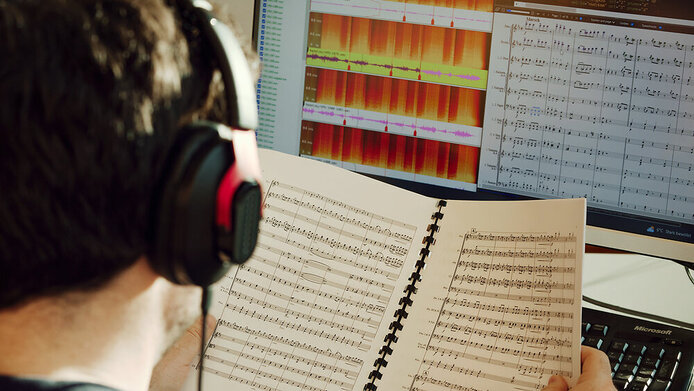
![[Translate to English:] Vienna Signature Sound](/fileadmin/_processed_/c/8/csm_signature-sound_46435194c7.png)
